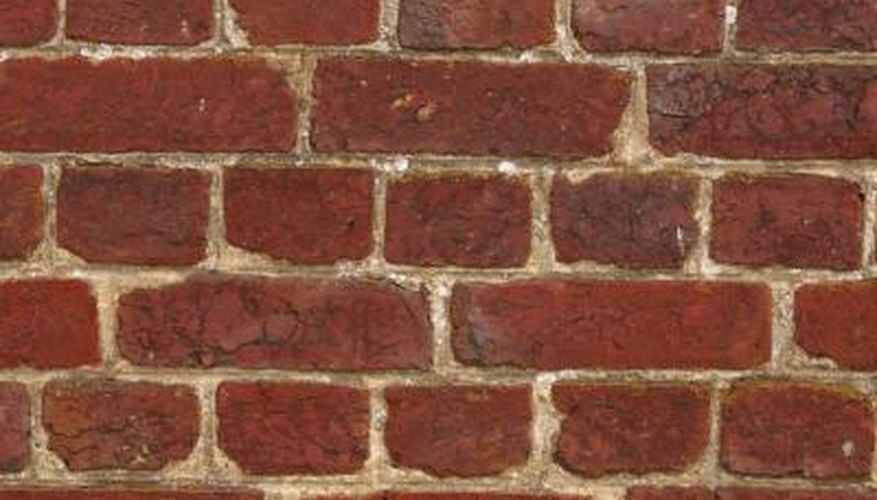With a history dating back thousands of years, bricks are still used as a building product, providing a high level of strength and durability. Although materials and production methods have been refined over the centuries, bricks are still composed primarily of clay. For this reason, a brick can easily crumble into dust under the right circumstances.
History
Examples of early brickmaking have been found in what was once ancient Babylonia, whose people may have been the first to manufacture bricks. Early brickmaking involved fashioning wet clay into blocks that were dried by the sun. Brick was widely used as a building product during the Victorian era, because it was deemed less likely to catch on fire than a wooden house. Since the 1960s, the introduction of new, high-tech building materials have led to a decline in the use of brick in modern construction.
- Examples of early brickmaking have been found in what was once ancient Babylonia, whose people may have been the first to manufacture bricks.
Modern Brickmaking
Most clay can be used in the production of bricks, although ground-up shale can also be used. After it's dug out, the clay is shaped into what are called "green" bricks that must be fired in a kiln at a temperature of more than 982 degrees Cor several days. The high temperature causes a chemical metamorphosis of sorts to take place within the clay, driving out the moisture and causing the material to harden considerably.
Crumbling
A building made out of bricks can last for an exceptionally long time. Numerous brick structures built during Colonial times, for example, are still standing. Despite the material's strength, clay-based bricks can easily crumble into dust in a number of ways. Harsh weather conditions, for example, can cause bricks to erode over time, which will eventually turn them to dust. Direct physical damage will also turn bricks into dust. For example, smashing a brick with a metal hammer will cause it to crumble, and with enough pounding will eventually turn to dust.
- A building made out of bricks can last for an exceptionally long time.
- Harsh weather conditions, for example, can cause bricks to erode over time, which will eventually turn them to dust.
Environmental Problems
Bricks manufactured to withstand the environmental demands of one region may crumble into dust when used in a different region that has differing weather patterns. An example of this took place in northern Texas during 2009. According to a news story from NBC's Dallas-Fort Worth affiliate, a number of north Texas homes, estimated at between 400 and 600, were built with bricks imported from Mexico that were not able to withstand the extreme climate changes that occur in north Texas. When temperatures fell below freezing, moisture that was trapped in the bricks would expand, and then thaw and contract. Repeated periods of freezing and thawing caused repeated expansion and contraction that caused the bricks to weaken, until they would eventually start cracking and ultimately crumble.
- Bricks manufactured to withstand the environmental demands of one region may crumble into dust when used in a different region that has differing weather patterns.
- According to a news story from NBC's Dallas-Fort Worth affiliate, a number of north Texas homes, estimated at between 400 and 600, were built with bricks imported from Mexico that were not able to withstand the extreme climate changes that occur in north Texas.
